Pushups are what they are, a very functional, boring-as-all-hell exercise. And they don’t get more interesting after doing thousands of reps during a training career. What’s more, the standard pushup’s narrow focus limits its positive effect. Pushups build strength in the chest, shoulders, and arms — they pop those pecs, but they run out of applications in a hurry. Don’t get me wrong; I love pushups. But there’s more to training than just going up and down. Enter spiderman pushups, a variation that makes this old calisthenic standby juicy again.
The spiderman pushup’s coordinated upper and lower body movement introduces a significant challenge while the added leg movement improves mobility throughout the body. Plus, if someone happens to be looking at you from above, you end up striking a classic webcrawler pose, hence the name.
Let’s break down how to do the spiderman pushup, what to do if they initially don’t work for you, and why you should do them. After all that, we’ll discuss using spiderman pushups in a training program.
How To Do a Spiderman Pushup
Here’s a step-by-step breakdown of how to do the spiderman pushup:
- Start in the standard starting pushup position like normal. Your body should be a straight line from head to foot (plank position). Don’t let your lower back sag, and don’t elevate your butt. Keep your abs tight.
- As you descend, lift your left leg out to the side and bring your knee forward until it touches your left elbow. As you do this, turn your head to the left and look at your knee as it comes to your elbow. Make sure you pull yourself into the bottom position with your upper back muscles. Get as low to the ground as possible.
- Press yourself out of the bottom position while simultaneously lowering and straightening your leg until you are in the starting position.
- Repeat on the other side.
RELATED – How Many Pushups Should I Do a Day?
Can’t Do Spiderman Pushups? Here’s What to Do Instead
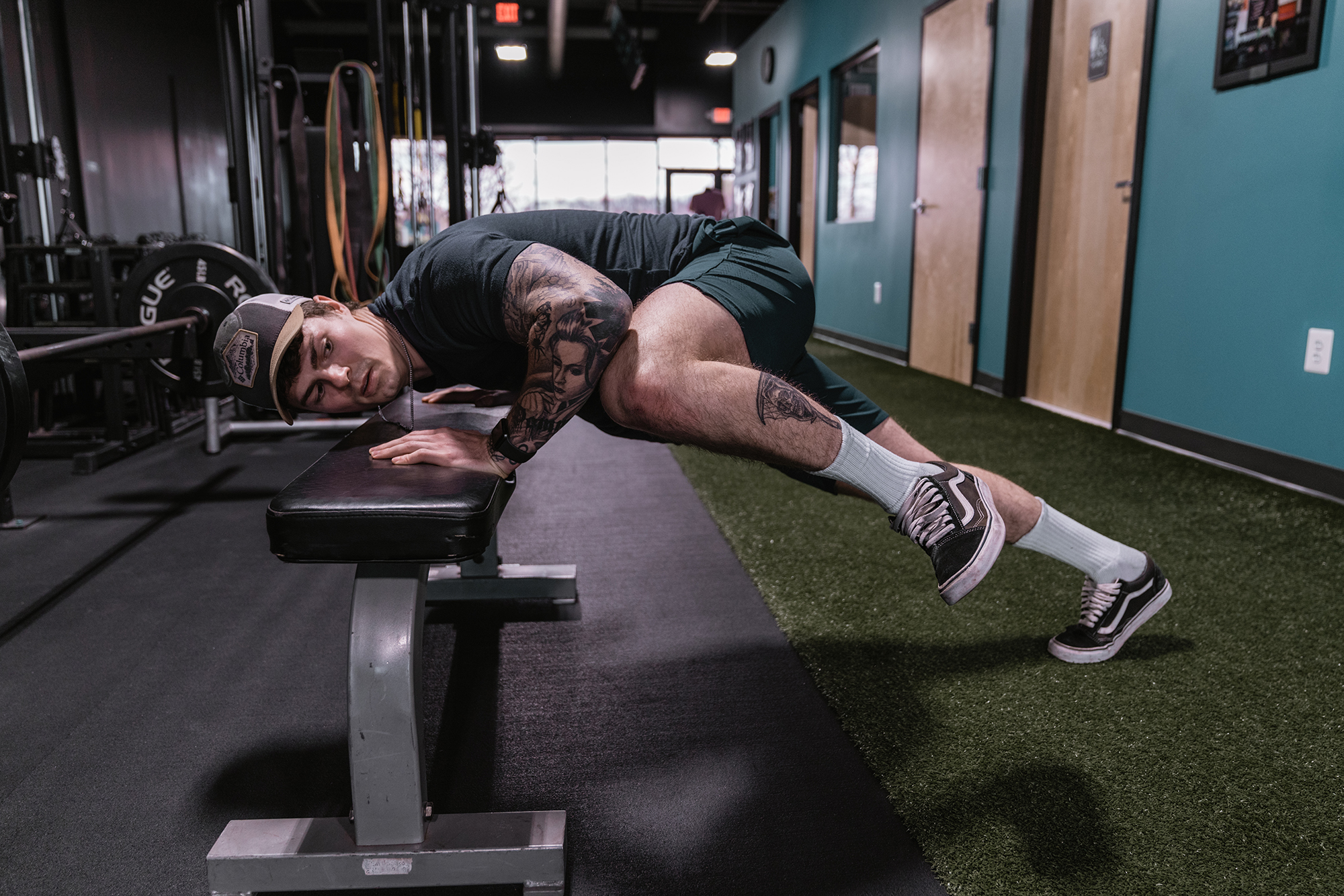
Maybe you just watched that video and thought there’s a better chance of seeing Wilford Brimley (rest in peace) without a mustache than you pulling off that sorcery. It’s alright. You don’t have to jump right into spiderman pushups; you can progress into doing them.
You can do a modified spiderman pushup or break the whole deal into two movements that are easier to manage until you can put them together.
Try making the movement less strenuous by placing your hands on a bench instead of the floor to elevate your upper body. This limits the range of motion and puts less demand on your hips and shoulders. If that doesn’t fly, break the spiderman pushup down into its constituent parts.
Start by rotating one shoulder closer to the ground while doing a standard pushup. Do 5 reps per side and alternate sides during each rep. (If you’re struggling to visualize this, check out the video below.)
Work on the knee lift separately by setting up in the up pushup position. Lift your knee up and away from your body as you bring it forward.
It should look and feel like you’re doing a mountain climber with your leg out to the side, like this:
As you gain proficiency with each of these components, try to put them together. It might feel clunky at first, but if you’re consistent in practicing both aspects of the spiderman pushup, you’ll eventually blend them into one smooth movement.
Try this pushup training plan while you’re working on your spiderman pushups.
RELATED – Proper Pushup Form and Why You’re Probably Doing Them Wrong
How to Make Spiderman Pushups More Difficult
Alright, you nailed execution, and you’re ready for a little more spice. Try spiderman pushups with your feet in a suspension trainer, like a TRX.
Follow the same steps but focus even more on keeping your abs engaged and your back flat throughout the movement — don’t allow your body to sag. Otherwise, you’ll lose control of your hips and end up in a wonky position, or worse, you might hurt yourself.
Seriously, don’t try this until you’re absolutely nailing spiderman pushups with your feet on the floor.
Why Do Spiderman Pushups?
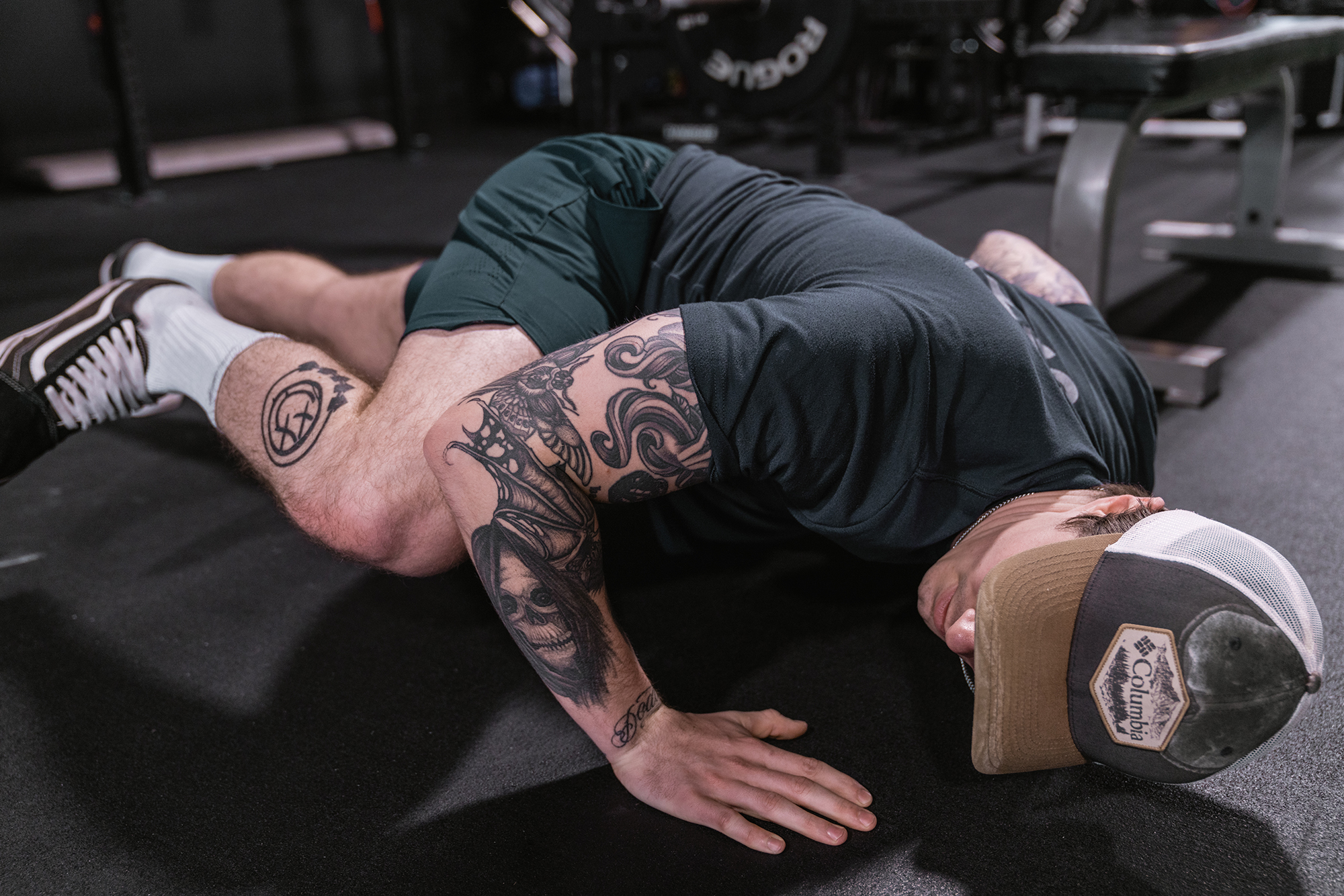
Spiderman pushups are more than just a great pushup variation; they also do your body a lot of good by improving mobility and stability. Let’s examine exactly how they do that, joint-by-joint.
The Hips — The hip of the moving leg gets a nice mobility challenge. You increase the hip’s overall active range of motion by flexing it (bringing your knee to your elbow) and abducting it (lifting it to the side). At the same time, the movement trains stability in the non-moving hip since it has to work its ass off to stay still while the other hip moves. Hip mobility and stability are crucial for, well, just about anything active that you want to do.
Abs — Drop down and do a spiderman pushup right now. Did you feel your abs kick into gear? That’s because your core is working hard to keep your lower back stable while your hips and upper body are moving. You’re building core strength with each rep.
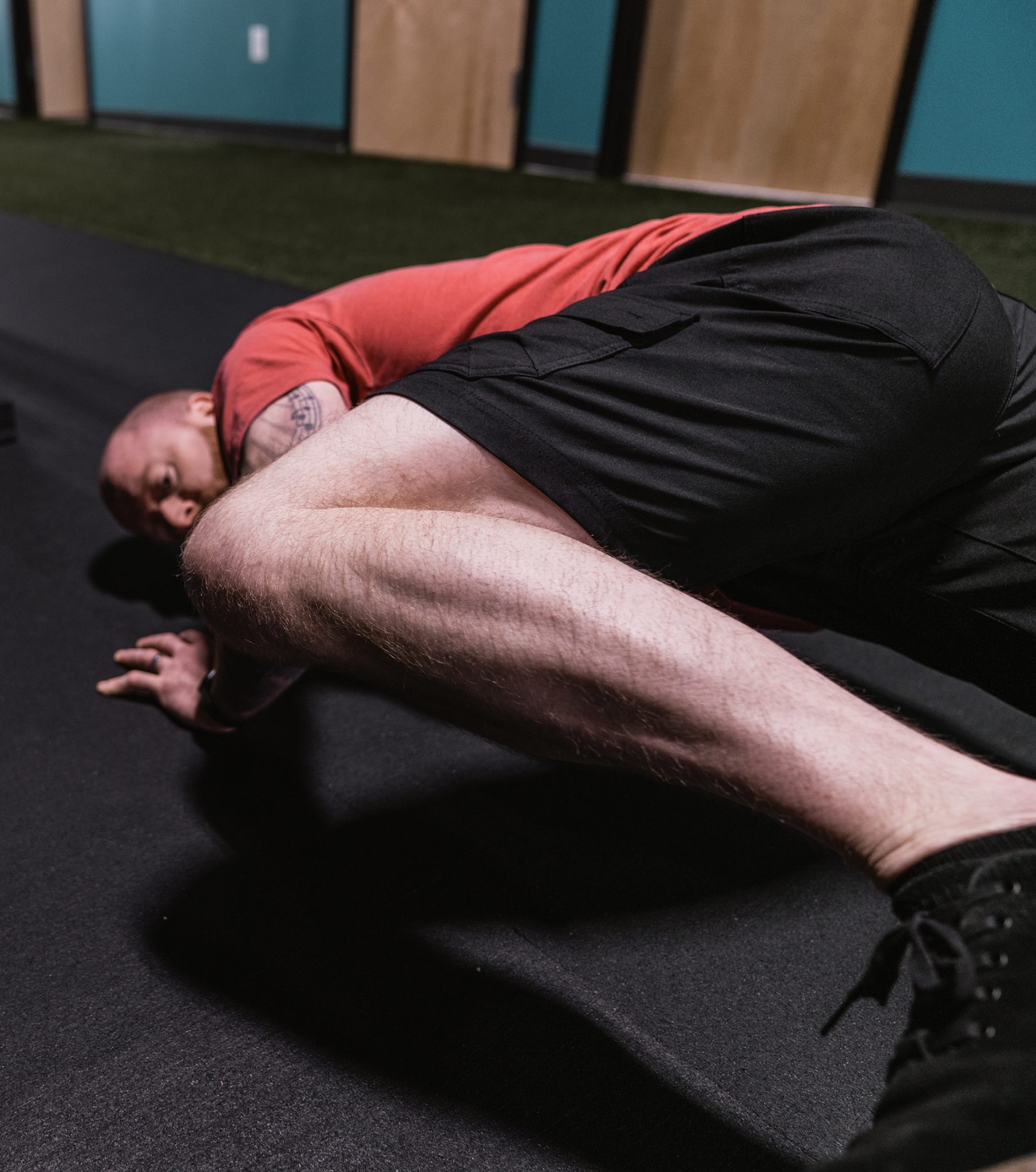
Upper Back and Shoulders — Just like other pushup variations, spiderman pushups build strength and muscle when done in sufficient quantity. But unlike most pushup variations, spiderman pushups also improve upper back mobility, which is crucial for shoulder health and overall good movement.
Bringing your knee forward during the descent while sinking as low as possible causes your thoracic spine to rotate, improving your active upper back range of motion. The rotation also improves the range of motion in the shoulder opposite the moving leg.
The Neck — The truth is that we don’t move our necks often enough, causing them to grow stiff and rigid. Any exercise that requires safe neck movement is a good thing.
RELATED – Ditch the Situps: Better Core Training for Hunters
Developing a Training Program
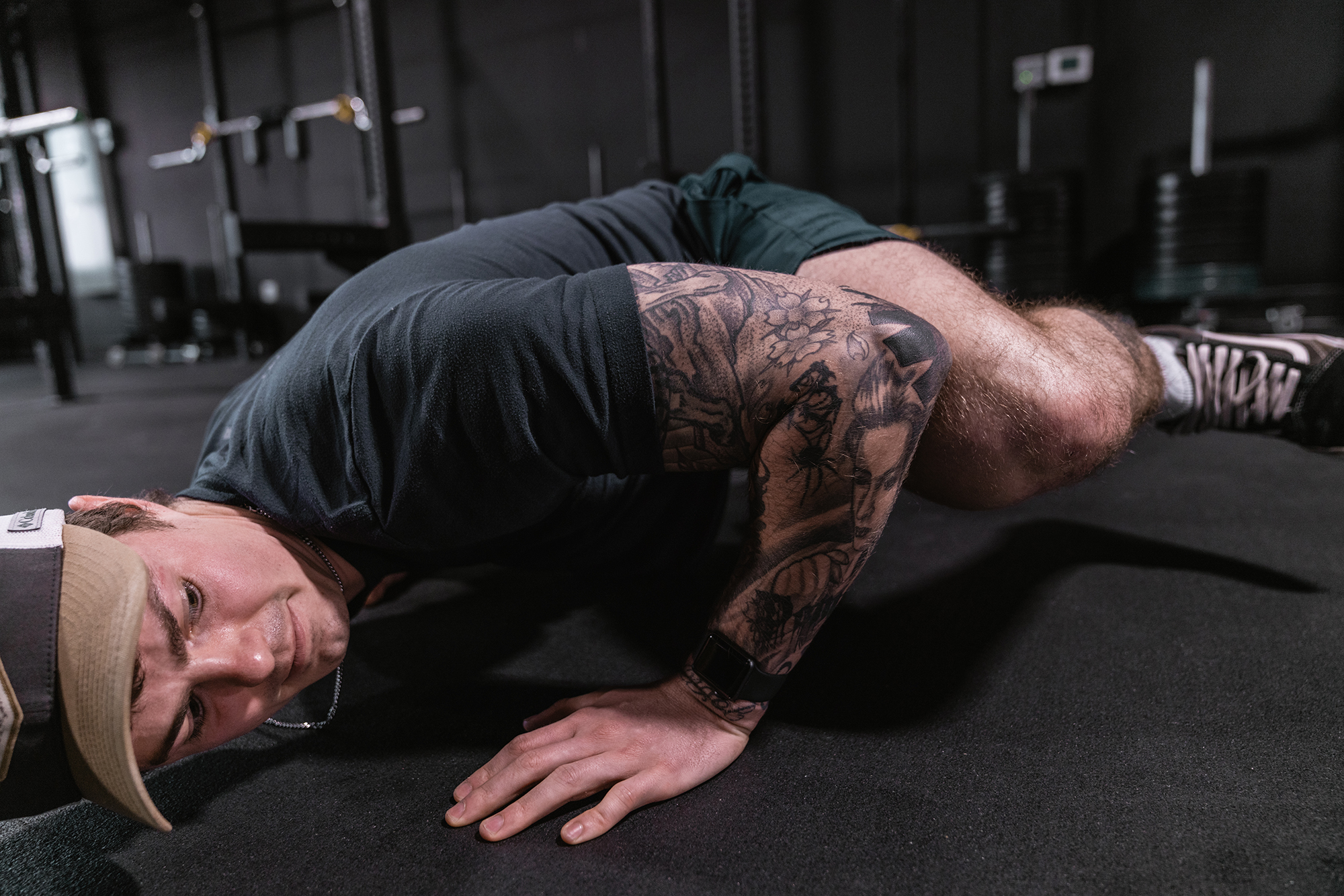
There are three great training applications for spiderman pushups. They work well as part of a dynamic warm-up, they fit in a bodyweight training circuit, and they are a solid assistance movement to follow heavy pressing and pulling during a strength training session.
Mix them in with your other dynamic warm-up exercises, preferably as you’re transitioning from floor-based movements to standing movements. Do 1 or 2 sets of 3 to 5 reps per side.
Keep with the 3 to 5 reps per side plan when including spiderman pushups in your bodyweight training circuits. You’ll keep the number of reps per set low to account for all of your additional exercise volume during the workout. The number of sets depends on the goal of a given training session and your fitness level. But the gauge for monitoring yourself is simple: If your technique goes to shit, stop.
Use spiderman pushups as a second or third assistance exercise on strength training days. That means immediately after your main movements, such as the bench press or overhead press. Or after a secondary movement such as a loaded pushup variation or dumbbell pressing variation. Reps and sets depend on your goals. But it’s best to limit the number of reps to 10 per side per set, or less, so you maintain solid form.
READ NEXT- Roman Chair Situps Are Bad for You – Don’t Do Them

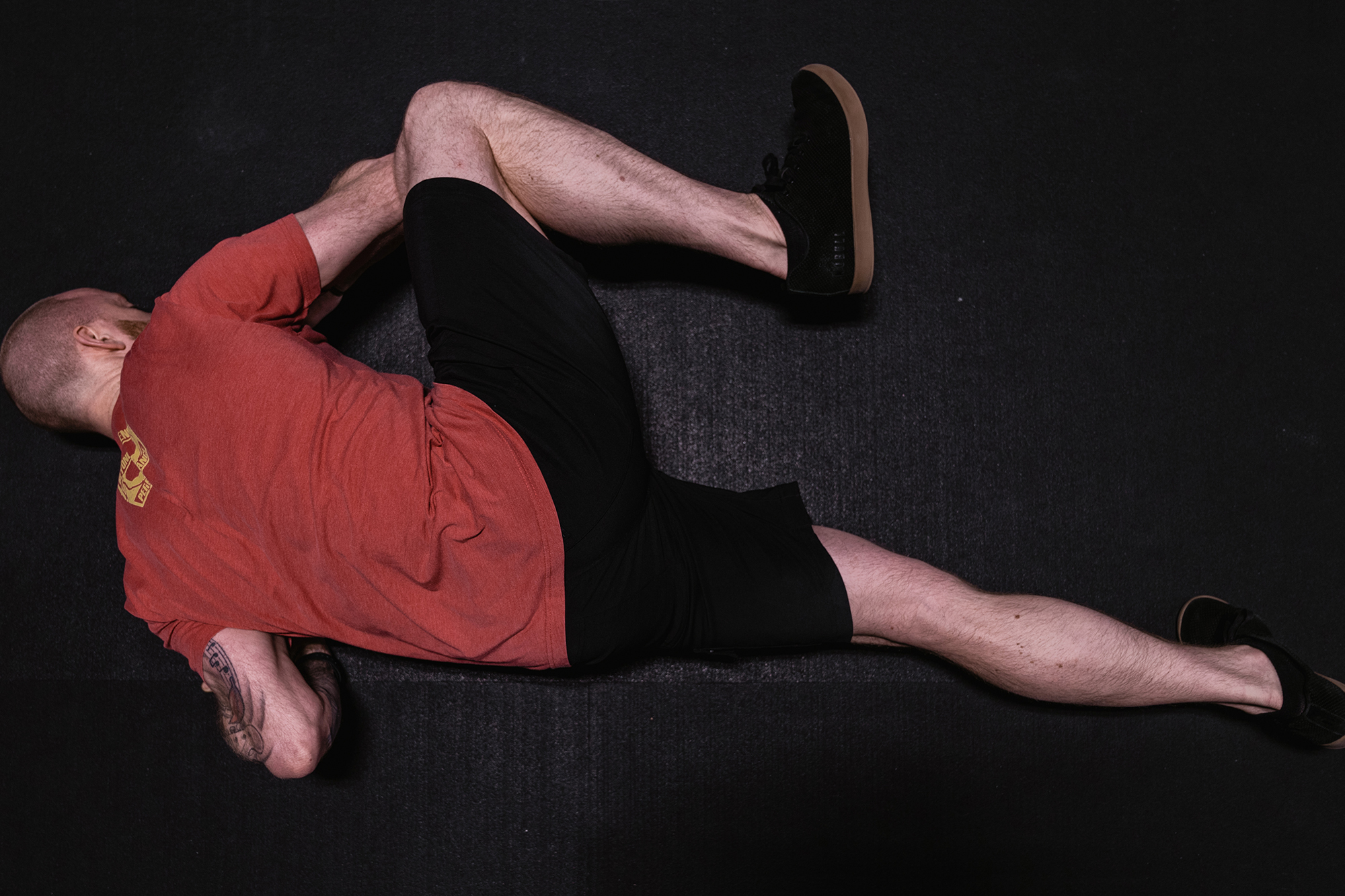






Comments